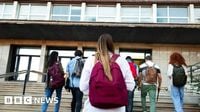On September 25, 2025, the Office for Students (OfS) released the first comprehensive, sector-wide survey of sexual misconduct at universities in England, revealing what many campaigners and researchers have long suspected: sexual violence and harassment remain alarmingly prevalent across higher education. With responses from 52,000 final year undergraduate students, this study marks the largest attempt yet to quantify the scope and nature of these issues within English universities.
The headline figures are sobering. According to the OfS, 14% of students who responded reported being victims of sexual violence—including rape, attempted rape, and unwanted touching—since becoming students. One in four reported experiencing sexual harassment, which covers a spectrum from unwanted sexually suggestive comments to unsolicited images and exposure. Though these numbers are distressing, they may actually understate the problem, as previous studies have found even higher rates, particularly among first-year students.
The survey, as reported by BBC and reviewed by Wonkhe, also found that certain groups are disproportionately affected. Women and lesbian, gay, and bisexual (LGB) students face markedly higher risks. Women were nearly three times more likely to experience sexual harassment than men and more than twice as likely to be sexually assaulted. Nearly half—47%—of LGB students reported sexual harassment, compared to 22% of their heterosexual peers. Disabled students also reported higher rates of victimization, a pattern echoed in academic studies across the UK and beyond.
Dr. Anna Bull, a senior lecturer at the University of York and director of the 1752 Group, which researches sexual misconduct in higher education, told Wonkhe, "The data confirms what we have known for a long time. For these students, university is not a safe or welcoming place." She called on the sector to meet the challenge with ambition, noting that the findings should drive universities to take more assertive action.
One striking aspect of the new data is its focus on final year undergraduates. While this provides a valuable snapshot, it also introduces limitations. As Wonkhe’s Jim Dickinson points out, first-year students are at the greatest risk, and by their final year, some students may have forgotten or blocked out earlier experiences, or even dropped out due to trauma. This means the true prevalence of sexual violence and harassment may be higher than reported. Previous OfS studies from 2024, which included broader student samples, found that over a third (36%) of students had experienced unwanted sexual contact and 61% had faced sexual harassment since becoming students.
Reporting rates remain stubbornly low. Only 13.2% of those experiencing sexual harassment and 12.7% of those subjected to sexual violence reported the incidents to their higher education institution. Of those who did report, only about half rated their experience as "good." Women, disabled, and LGBTQ+ students were less satisfied with the response than their male, non-disabled, and heterosexual peers. The reasons for dissatisfaction are complex. As Dr. Bull’s research in "Higher Education After #MeToo" highlights, many university policies have historically been inadequate, and the focus of reporting processes has often been on sanctioning the accused rather than prioritizing the safety and needs of the survivor.
Molly Hanning, a 22-year-old master's student at Royal Holloway, University of London, shared her personal story with BBC. After being raped during her first year, she found the university’s support lacking. "They just didn't want to be involved and wanted to pass me to the next person—that was really, really frustrating," she said. She described being provided only with leaflets and referred to external services, rather than receiving direct help. The lack of meaningful support took a significant toll on her mental health. "I would have thought that wellbeing departments at universities would be able to cope with more than just exam stress," Molly reflected.
In response, Dr. Nick Barratt, who leads student support at Royal Holloway, acknowledged the profound impact such experiences can have, stating the university is "committed to listening with care and responding with integrity." He added that Royal Holloway strives to offer "compassionate support" and values student voices in shaping ongoing improvements. Molly, undeterred by her ordeal, went on to found Academics Against Assault, campaigning for mandatory consent education at all UK universities and running workshops on enthusiastic consent and bystander intervention.
The OfS survey also sheds light on staff-student relationships, an area fraught with potential for abuse of power. About 1.5% of respondents reported having been in an intimate relationship with a staff member, and of those, nearly 69% said the staff member was involved in their education or assessment. Dr. Bull expressed surprise at the high figures, noting that even consensual relationships can lead to harm, particularly when power imbalances are at play. Previous OfS research found that a third of students in such relationships felt pressured to continue or escalate the relationship out of fear for their academic or professional future.
In response to these findings, the OfS introduced new regulatory requirements effective August 1, 2025. Universities must now provide training for staff and students to improve understanding of harassment and sexual misconduct, publish clear policies and procedures, and take steps to prevent abuses of power in staff-student relationships. Additionally, a ban on non-disclosure agreements in cases of harassment or sexual misconduct came into effect in September 2024. Institutions that fail to comply risk facing fines.
While these reforms are significant, gaps remain in the data and the policy response. The survey excluded postgraduates and most undergraduates, and did not address racial harassment, stalking, or domestic abuse—forms of victimization that, as Crime Survey for England and Wales data shows, are also prevalent among young people. International students, who face unique risks and barriers to support, were not a specific focus of the latest analysis, though earlier pilot studies indicated they are more likely to be involved in staff-student relationships and less likely to access adequate support.
Globally, other countries have taken more expansive approaches. Ireland and Australia, for instance, have conducted national surveys covering both staff and students, using the data to drive cross-institutional interventions and legislation. England’s focus on final-year undergraduates is comparatively narrow, and experts caution against relying solely on this data to guide future policy.
Still, campaigners and researchers agree that the OfS survey is a vital step toward confronting the reality of sexual violence and harassment in higher education. As Dr. Bull put it, the key takeaway is that "students are being subject to a significant level of sexual harassment and violence, and particularly women, LGBTQ+ and disabled students are unable to access higher education in safety." For many, the hope is that this new data will spur universities to move beyond rhetoric and take decisive action to protect students and foster safer, more inclusive campuses.
With the publication of these findings and the introduction of stricter regulations, the spotlight is now firmly on universities to deliver real change—because for too many students, the promise of a safe and supportive higher education experience remains unfulfilled.





